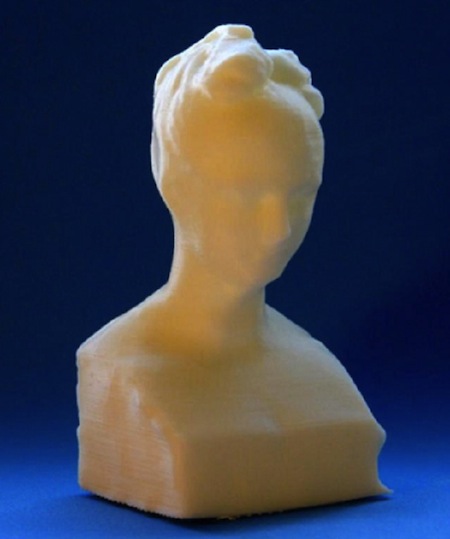Cosmo Wenman is certainly a memorable artist. What he has created is something unique — yet very familiar. In the future, his approach could enable art critics (classical or otherwise) to admire this work in the comfort of their own homes — whilst also giving them a surge of ‘art cred’ in the right circles. This has been enabled by 3D printing —read on to find out how.
Some time ago Wenman visited the J. Paul Getty Museum in L.A., with only a camera and a determined attitude to fullfill his mission — to capture his favourite pieces of art on film — from all conceivable angles. The captured images were transferred to a computer and converted into 3D digital models before being 3D printed on a MakerBot Replicator. Watch an interesting timelapse video of the replicating process below.
What made this approach particularly interesting, however, is the openness around the entire process — using open-source software and even uploading the best 3D scans on Thingiverse — it is clear that Wenman would happily see others applying his method and giving it their own spin.
Today, the bold legacy of Wenman lives on through through larger collaborations celebrating famous art – previously only available for the eyes of physical visitors to different museums. There are data maps available on Thingiverse that point to the New York Metropolitan Musem of Art and MakerBot’s approach of spreading the unified message of art and 3D printing, but the main reason that this project – without hesitation – is something groundbreaking is the mindset and ideology behind the entire process – which is raising awareness of art in general and creating a much more personal and intimate relationship with the classical pieces by bringing them to life outside of the museum’s secluded walls.
However, as prosumer grade 3D printers, such as the Replicator 2 and Form 1, penetrate the market more deeply, the note of the dialogue from the institutional side might not be so positive. Currently, the quality of the replicated statues and other multi-dimensional art is no where near that of the originals and reactions are positive, but what will happen when the resemblance gets closer to 100% with 25 micron accuracy. I suspect the eternal questions in this sector could come under even more furious debate than today — What is art – how is it defined and who owns it?
What do you think the future holds regarding art and it’s relationship with 3D printing? Share your insight below in the comment section.
And if you’re interested in trying this process for yourself and recreating art — recognised masterpieces or less familiar pieces — the applications and manuals can be found on Wenman’s website – just click on the source link.
Source: Cosmo Wenman, Bloomberg



